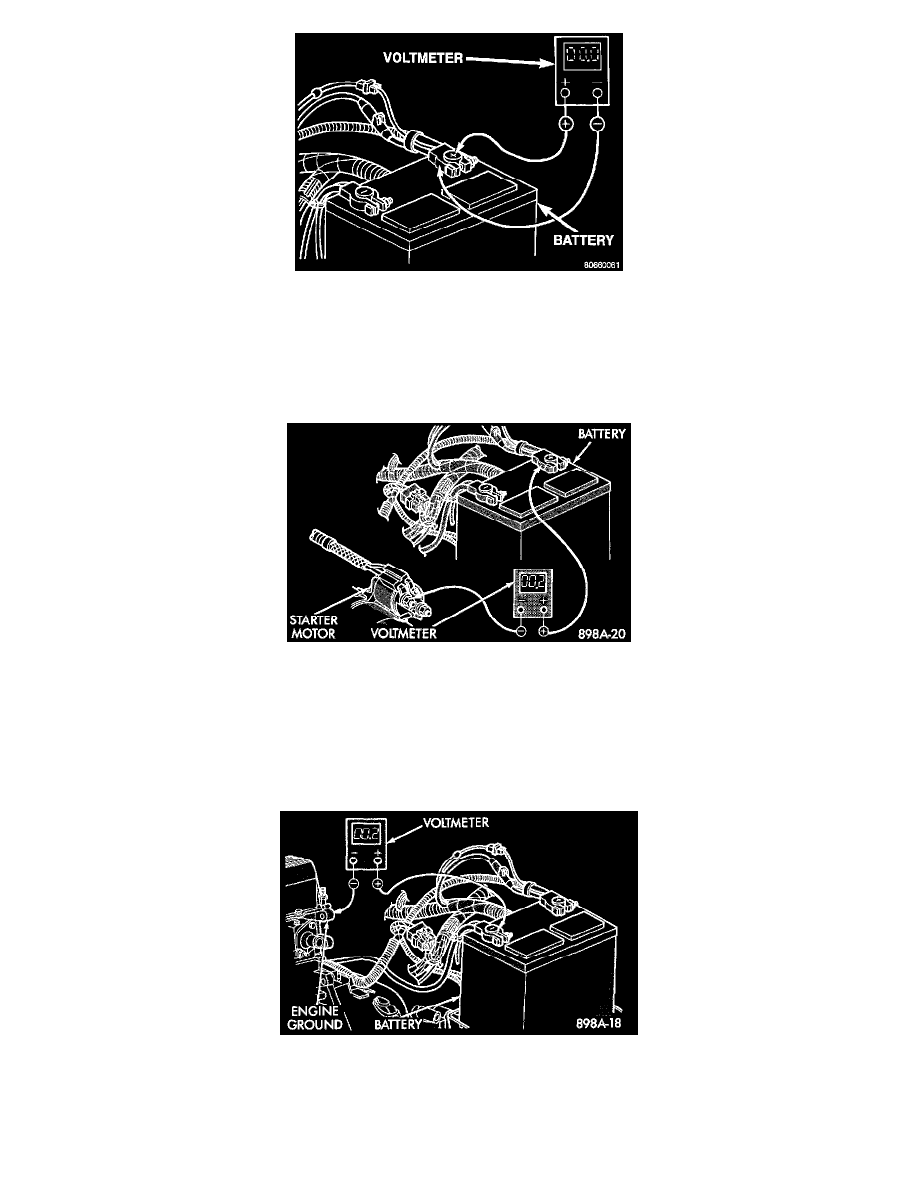RAM 1500 Truck 4WD V8-5.9L VIN Z (2002)

Test Battery Positive Connection Resistance - Typical
2. Connect the positive lead of the voltmeter to the battery positive terminal post. Connect the negative lead of the voltmeter to the battery positive
cable terminal clamp. Rotate and hold the ignition switch in the Start position. Observe the voltmeter. If voltage is detected, correct the poor
connection between the battery positive cable terminal clamp and the battery positive terminal post.
NOTE: If the vehicle is equipped with a dual battery system, Step 2 must be performed twice, once for each battery.
Test Battery Positive Cable Resistance - Typical
3. Connect the voltmeter to measure between the battery positive cable terminal clamp and the starter solenoid B(+) terminal stud. Rotate and hold
the ignition switch in the Start position. Observe the voltmeter. If the reading is above 0.2 volt, clean and tighten the battery positive cable eyelet
terminal connection at the starter solenoid B(+) terminal stud. Repeat the test. If the reading is still above 0.2 volt, replace the faulty battery
positive cable.
NOTE: If the vehicle is equipped with a dual battery system, Step 3 must be performed on the driver side battery only.
Test Ground Circuit Resistance - Typical
4. Connect the voltmeter to measure between the battery negative cable terminal clamp and a good clean ground on the engine block. Rotate and hold
the ignition switch in the Start position. Observe the voltmeter. If the reading is above 0.2 volt, clean and tighten the battery negative cable eyelet
terminal connection to the engine block. Repeat the test. If the reading is still above 0.2 volt, replace the faulty battery negative cable.
